-
Car Reviews
- All reviews
- Midsize SUVs
- Small cars
- Utes
- Small SUVs
- Large SUVs
- Large cars
- Sports SUVs
- Sports cars
- Vans
Latest reviews
- Car News
-
Car Comparisons
Latest comparisons
- Chasing Deals
Every freezing January in Detroit, the motoring press huddles together—for warmth, and to await the unveiling of the most important models for the forthcoming year.
If you’re a manufacturer and you’ve got something big to announce, you drop it at Detroit.
This year’s 2016 North American International Auto Show was, perhaps, a little quieter—though, there were still a number of huge new releases which will arrive on the Australian market over the next six months.
Here’s your wrap-up of the cool stuff from the 2016 Detroit Auto Show.
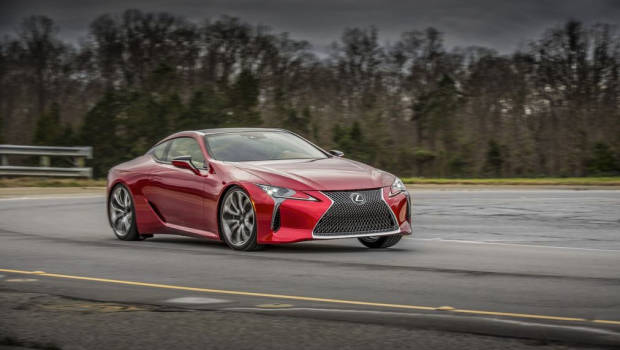
This sexy number will blow your mind—this is the new Lexus flagship coupe, the LC 500. And what you see above is the production car. Not a concept. This is the one that will wear number plates and be on the road by the end of the year.
Motivated by the GS-F’s 348kW five-litre, naturally aspirated V8, the LC 500 should be a real screamer. An F version is also forthcoming. In standard form, the LC will hit 100km/h in about 4.6 seconds, with a snappy ten-speed automatic gearbox.
In Australia: end of the year
Price: about $200,000
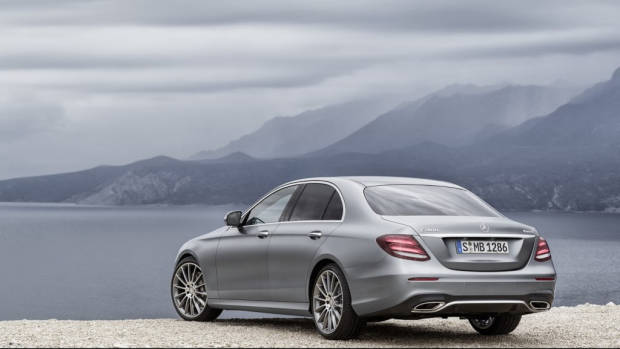
Not many things in life have a seven-year pattern, but the renewal of the Mercedes-Benz E-Class is one of them. One of the real constants of the luxury segment, the E-Class receives its fifth-generation update this year, coined the W213 series. And no—we haven’t included the wrong picture. You’ll note the significant resemblance to both the lower-end C-Class and higher-end S-Class, both of which also sit on the Benz MRA architecture. That new platform makes the new E-Class bigger, but also lighter, than the old W212.
The focus is on four-cylinders for the mid-year launch. The Americans will get one engine only at launch—a two-litre petrol four E300. Here in Australia, we generally get the European spec, which will mean a 135kW two-litre petrol E200, a 143kW turbodiesel E220d, and a more exciting 620Nm E350 diesel V6. Hotter models, like an E450 AMG and the Mercedes-AMG E63, will follow. All will feature a nine-speed automatic.
Inside, the E-Class moves up into plusher territory, borrowing the S-Class’s dual 12.3-inch screens (one for the dials, one for the infotainment) in high-spec cars. Underneath it all, two types of adaptive suspension—one steel, one air—will make sure there’s no need for your bottom to feel the imperfections in the road below.
In Australia: mid-year
Price: From $85,000 (est.)
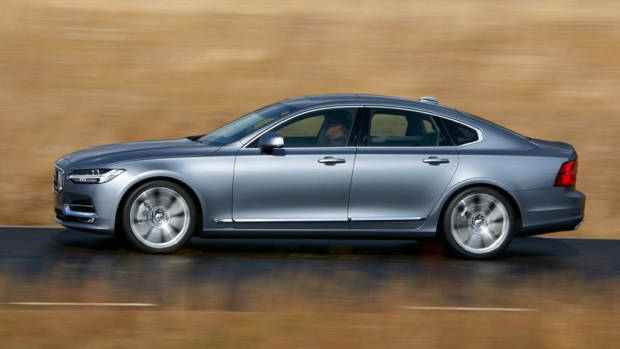
Volvo’s back, baby. That was made clear with the arrival of the second-gen XC90 SUV in 2015—the first and only model Chasing Cars rates at 9/10. The second model to sit on the XC90’s SPA platform is this, the S90—a large, luxurious four-door sedan that replaces the ailing S80 and competes with the BMW 5 Series, Audi A6, Jaguar XF and the new E-Class.
Speaking of E-Class, the thinking was loud and clear at Detroit: the big Volvo overshadowed the launch of the new Merc. That in itself is an achievement—the luxury sedan market is a crowded one, and breaking through with a new entrant is tough. But with all of us knowing how good the XC90 seriously is, there are high hopes for the S90.
The similarities between the two continue to the engines, with the S90 offering the same three options: a supercharged-turbocharged T6 petrol, a twin-turbo diesel, and a ‘twin-engine’ petrol-electric hybrid producing a heady 300kW. Polestar are likely to turn their hand to the T8 hybrid model.
In Australia: spring 2016
Price: From $85,000 (est.)
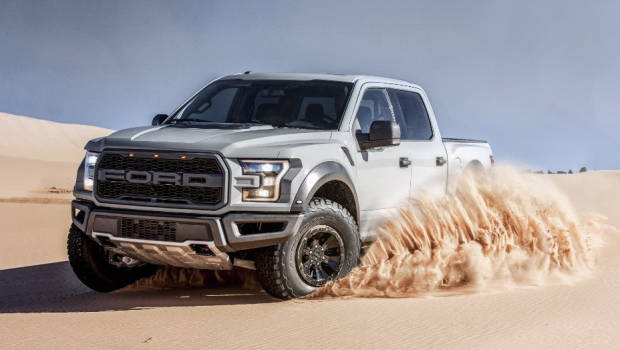
Australia is so ready for the arrival of America’s big trucks. That’s plain to see in the gradual up-sizing of our largest breed of utes—the Volkswagen Amarok and Ford Ranger are key examples. But those models pale in comparison to the proper pick-ups our American friends enjoy. The latest entrant to that market is the dual-cab variant of the epic Ford F-150 Raptor. Dubbed the SuperCrew, this is the one you buy when you want to intimidate and carry four mates in comfort.
An all-new F-150 was launched in the US last year, and the move to significant aluminium components has been controversial. The Raptor follows suit—despite increasing in size over the old car, the new one drops 230kg. Part of those weight savings are also drawn from dropping the heavy, thirsty old 6.2-litre aspirated V8 for a twin-turbo 3.5-litre V6 petrol. We can see this one working here with a big diesel, though…
In Australia: not any time soon, sadly…
Price: $75,000 (est.)
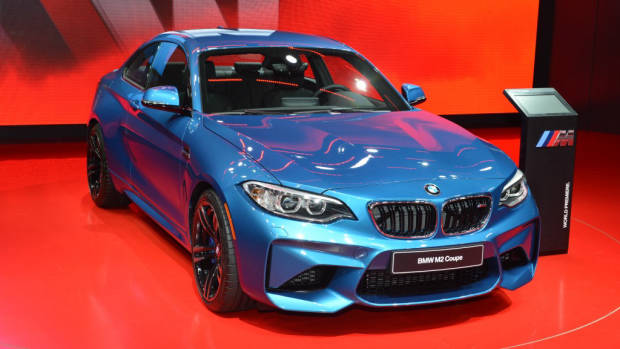
We’ve been lusting over pictures and videos of the BMW M2 for a while now, but the world saw it in the flesh for the first time at Detroit. And what a looker it is.
Small, pert proportions and a Long Beach Blue paint job do wonders for the hottest 2 Series coupe. Also attractive was the pricing, which was released for the American market – just US$51,700. Here in Australia, leaked pricing indicates that a manual-gearbox M2 Pure will start just shy of $90,000.
BMW also reminded us of the ferocity of the M2’s twin-turbo 3.0-litre straight six, which will produce 272kW and sprint to 100km/h in 4.5 seconds.
In Australia: mid-year
Price: From $89,900
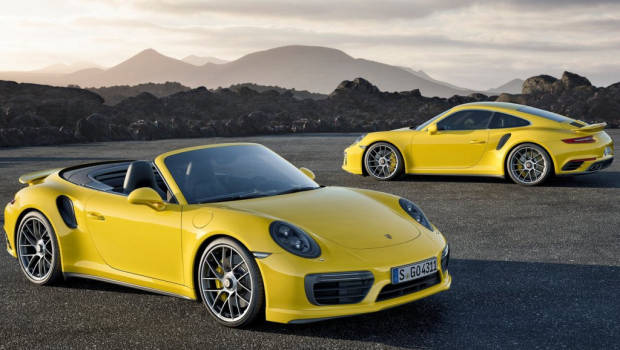
With the hugely-controversial update to the regular Porsche 911 out of the way—remember, the Carrera range moved to an all-turbocharged setup—Porsche capitalised on Detroit to unveil the 991.2 generational updates to the hero 911 Turbo and Turbo S models.
With the Turbo models already fans of forced induction (the clue was in the name), these changes were thoroughly uncontroversial. The Turbo model gets some revised engine mapping and cylinder head updates for 2016, while the Turbo S sees its turbochargers swapped out for bigger, better ones.
These little improvements see both models increase in power by 15kW. That brings the 911 Turbo to 408kW and the 911 Turbo S to 439kW.
The Turbo S is good for 2.9-second sprints to 100km/h, which makes it faster than the Lamborghini Huracan, McLaren 650S, Ferrari 488 GTB, and the Audi R8 V10 plus. Plus, it’s liveable everyday.
In Australia: mid-year
Price: From $400,000 (est.)
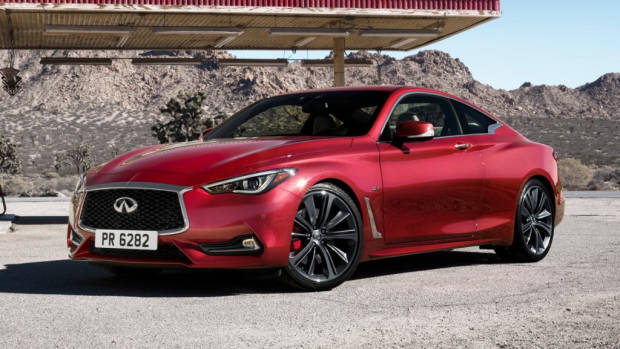
The brand-new Infiniti two-door is a bloody good-looking car, but is this the Infiniti that finally puts the brand on the map in Australia?
Nissan’s luxury marque has been struggling since launch here, although in the US market, it has a very solid following—think similar perceptions to Lexus and Honda’s luxury brand, Acura, which we don’t get here. The Q60’s a two-door premium coupe and it squares off against the Lexus RC, Mercedes-Benz C-Class Coupe, and BMW 4 Series.
With a huge new signature grille and LED headlights, plus minimum-19-inch wheels, there’s nothing wrong with the looks. Plus, the engine lineup looks decent. The top of the line twin-turbo petrol V6 makes 298kW—tasty—while there are also 223kW sixes and a 155kW four. This is a rear-wheel-drive car that pushes power exclusively through a seven-speed automatic.
In Australia: very hard to say what will happen to Infiniti.
Price: from $55,000 (est.)
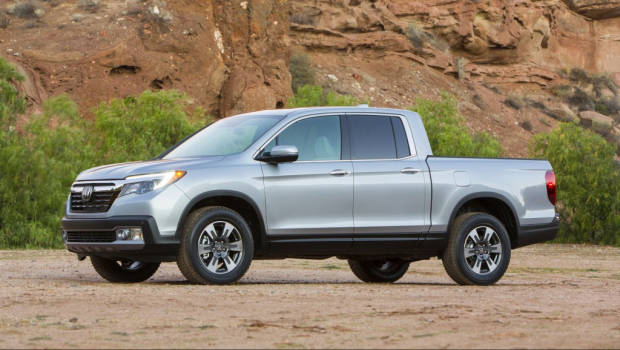
The Ridgeline is a curious car that we might enjoy here—it’s Honda’s mid-size pickup, broadly similar in size to a dual-cab HiLux, Ranger, Triton, or Navara. The scratch-resistant tray (or ‘bed’, if you’re an American) is 122cm wide and can carry a payload of 725kg—but that’s not its party trick.
No, that gong belongs to the tray’s in-lining audio system, just perfect for tailgate parties in the stadium carpark.
This is a front-wheel-drive pickup mated to a 3.5-litre aspirated V6 with a six-speed automatic only. Safety equipment is strong for a ute, with a bunch of available technology including autonomous emergency braking, lane departure warning, road departure mitigation, and active lane keep assist.
In Australia: nope, sadly.
Price: from $45,000 (est.)
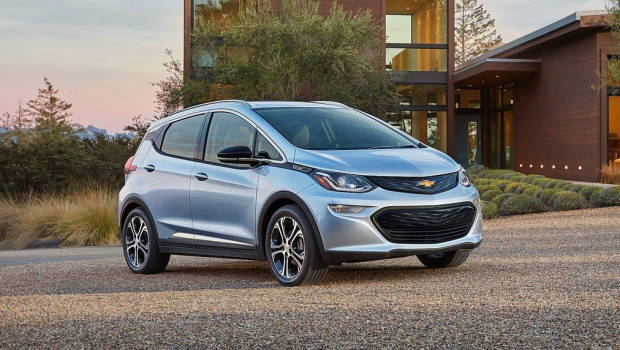
Hey, look, it’s the General Motors i3! With a great name, the little Bolt could make a great inclusion in the Holden range, if the price is right. It’s hard to say what this small, five-door electric car would sell for here in Australia. In the US, a system of government grants allows Chevrolet to list the Bolt for US$30,000, or about 10% cheaper than an entry-level, Prius-sized Volt—the slow-selling plug-in hybrid that sold as a Holden here.
In Australia: we’d bring it out by the end of 2016 if it were us…
Price: From $35,000 (est.)
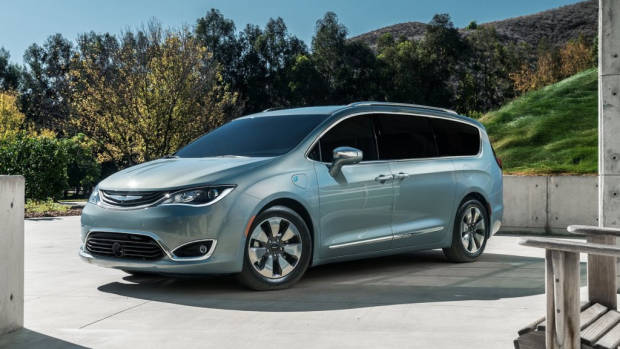
Station wagons are experiencing a renaissance of cool—minivans, not so much. That’s something that Chrysler is keen to change. The Grand Voyager name is scrapped here—it’s now ‘Pacifica’, a sleeker, all-new MPV. The Pacifica has one mission in mind: stem the flow of families from big vans to SUVs.
The Pacifica ups its practicality game to try and make it the obvious answer when you’ve had one too many children. Both sliding doors are electric, of course, and they can be triggered with a wave of the foot. All second row and third row seats can be electrically folded completely flat—and if you think you’ve seen storage space, think again.
There will also be a pretty impressive Pacifica Hybrid model which will offer 50km of pure electric range, which should be perfect for the school run or for heading to the shops.
In Australia: mid-year
Price: from $50,000 (est.)
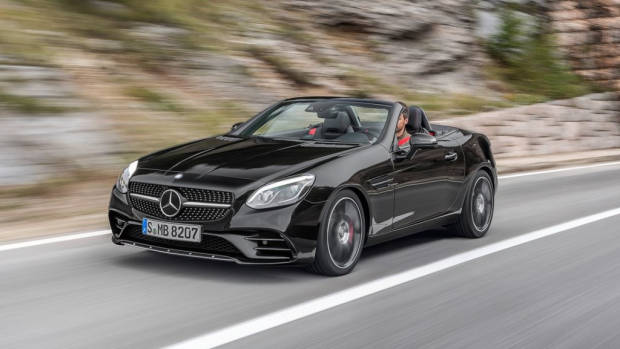
Does an SLK by any other name drive as sweetly? Perhaps not. The refreshed SLK, now called the SLC-Class, sadly drops the sultry 5.5-litre naturally-aspirated V8 that powered the old SLK55 AMG. That motor was actually AMG’s last one without any forced induction.
Anyway, the SLC arrives with a restyled nose to match its bigger SL-Class sister. The long hood remains, carrying one of four engines at launch: two four-cylinder petrols, a diesel, and a new twin-turbo V6 making 270kW to power the Mercedes-AMG SLC43. The 43 will sprint to 100 in 4.7 seconds.
In Australia: soon
Price: from $85,000 (est.)

As Holden moves towards becoming a full-line importer, local manufacturing of the Cruze small car will end and it will be partially replaced by the foreign-built Cruze, which is into its second-generation overseas. We saw the hatchback launch at Detroit, and God knows it’s a better-looking car than the awkward-looking Australian made one.
This one has a conventional tail with flowing lines, wraparound tail lights and an integrated spoiler, all of which create a more cohesive-looking car. The boot conceals huge cargo space—the 524 litres smashes the Golf’s 380. The weight loss of 91kg, achieved through a lighter chassis and turbocharged engines, isn’t something to sneeze at either. Move over, Golf and i30? That’s the plan.
In Australia: end of the year
Price: from $20,000 (est.)
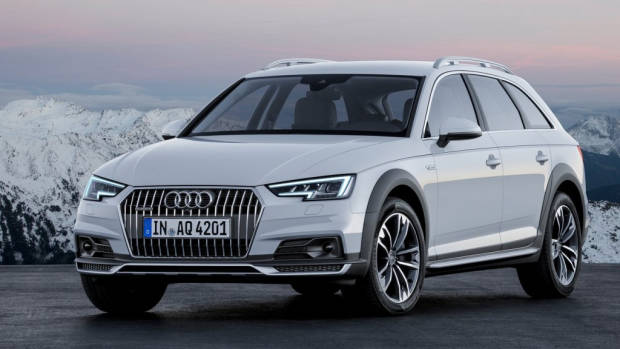
This was the first time we’d seen confirmation that the smallest raised Audi wagon, the A4 Allroad, was going to be continuing for another generation. That’s a good thing—jacked-up wagons are a good alternative to an SUV if you just don’t buy into having to own a truck just because you had kids.
The styling is typically Audi-minimal, with just some plastic and aluminium cladding to differentiate the Allroad from the standard A4 Avant. There’s also a ride height increase and an off-road mode added to the drive mode selector, but few people will have pretensions of serious exploration with the Allroad.
Five different diesels will be available at launch in Europe, but we’re likely to just get the most powerful four-cylinder oiler here.
In Australia: will arrive with the rest of the B9 A4s soon
Price: from $80,000 (est.)
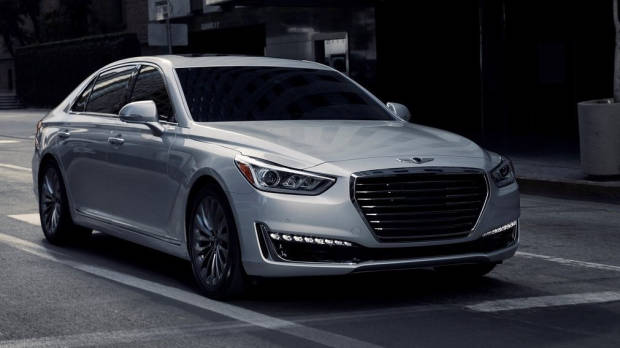
The Genesis brand completes its amicable divorce from parent company Hyundai—but they’re still going to live under one roof, with one central design and management team for now. The G90 is the first semi-major update to one of the Genesis vehicles, but it’s the one we don’t actually get in Australia—the S-Class sized, V8-powered car formerly known as the Hyundai Equus.
The ‘standard’ Genesis (that we do get) will be called the G80.
The G90 sees a twin-turbo V6 added to the menu alongside the existing five-litre V8 which pushes out a stout 313kW. Both powertrains are available with all-wheel-drive and a plush executive-style back seat, but it’s unclear whether we’ll get the big Korean barge here.
In Australia: probably not
Price: from $90,000 (est.)
Latest news
About Chasing cars
Chasing Cars reviews are 100% independent.
Because we are powered by Budget Direct Insurance, we don’t receive advertising or sales revenue from car manufacturers.
We’re truly independent – giving you Australia’s best car reviews.